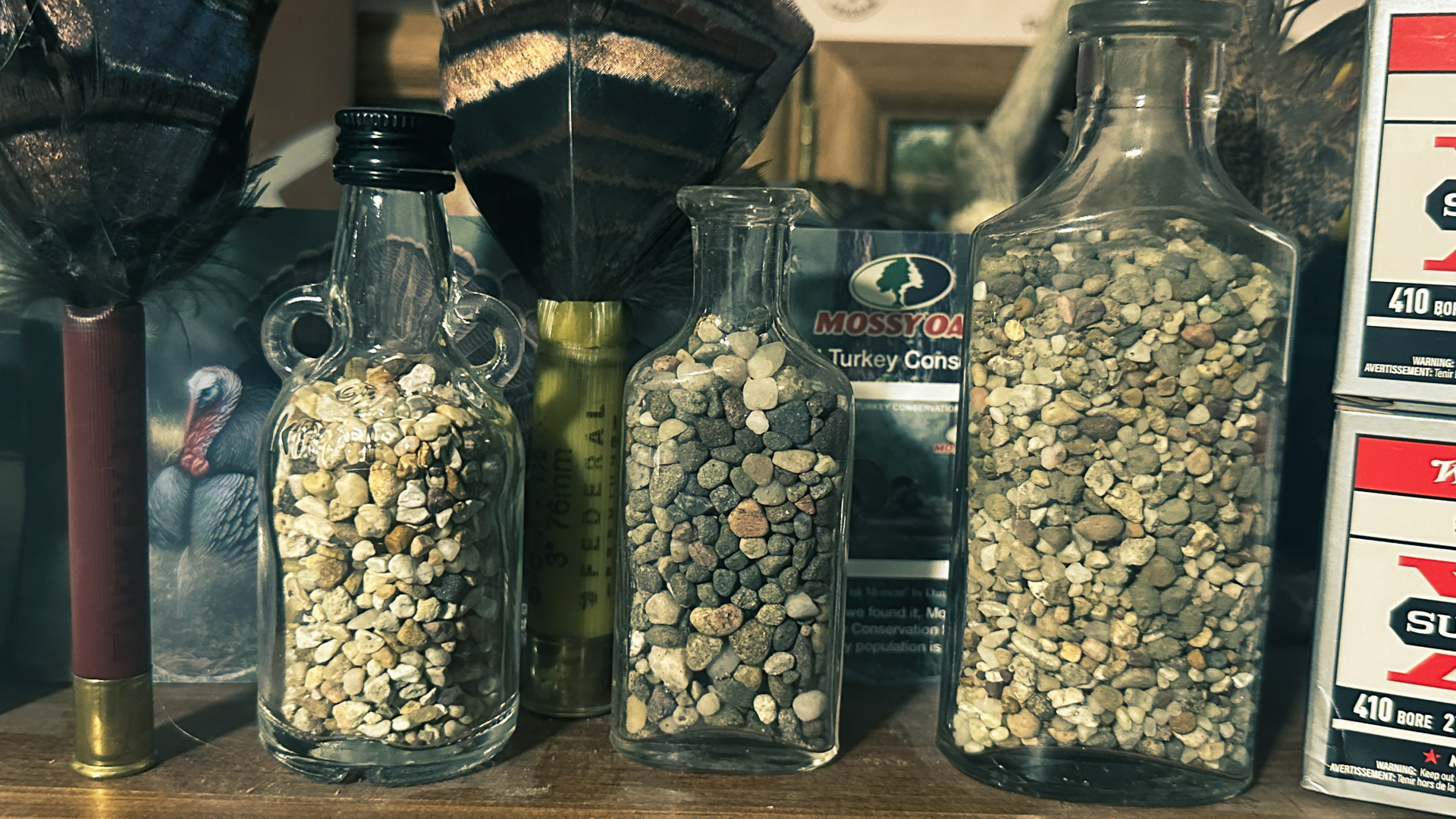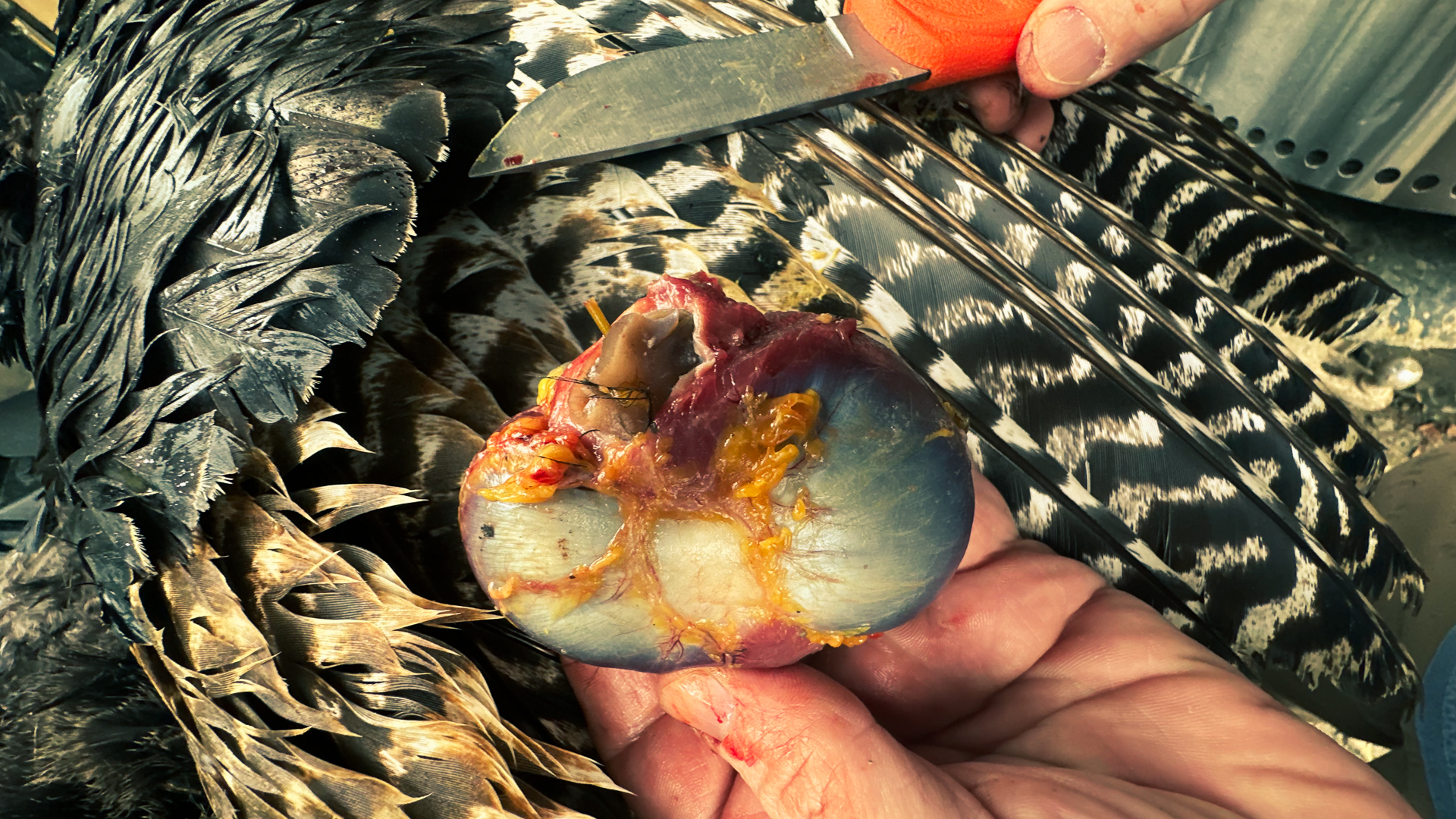
Brodie Swisher
Looking for a unique way to save the memories of your bird? Start saving the gizzard stones for a colorful way to collect more trophies from your bird each spring.
The gizzard of a wild turkey is an overlooked organ that rarely gets a look, despite its fascinating function to the bird’s anatomical system. In fact, I rarely heard the word gizzard outside my visits to my grandmother, Nanny. Seems like she always had some fried gizzards close by in her little country kitchen when it was time to eat.
What is the Turkey Gizzard?
The gizzard is an example of a fascinating design by the Creator. It's part of the digestive system and serves as a muscular food-grinding organ that helps birds, like turkeys and chickens, to digest seeds and insects. It's also known as the gastric mill or hen's teeth. Why? Simply because it does what teeth would do – since birds don’t have teeth.
A turkey will pick and eat small stones, rocks and grit that collect in its gizzard. These stones are used to mill food into smaller pieces for more thorough extraction of nutrients before moving through its digestive system. It’s quite an impressive process, really.
However, somewhere down the line, a curious turkey hunter discovered these stones and realized their potential for beauty and nostalgia when placed on the shelf in a glass bottle. And if you’ve never given it a try, it’s a great way to collect and save more memories from your next successful turkey hunt. Here’s how to make it happen.
Locating the Gizzard

Think of the gizzard as the last in line when it comes to the bird’s giblets. You’ve got the neck, heart, liver, kidneys and then the gizzard on the tail end. You can locate and open the large body cavity between the birds’ legs and remove the gizzard. It’s a small, disc-shaped organ about the size of a snuff can. You can easily cut and remove the gizzard from the cavity.
Removing the Stones
Use a knife to cut into the gizzard just enough to access and remove the stones. You’ll feel the stones with your knife as you make contact. The inside of the gizzard is a dry, gritty pocket. Use your knife to scrape the stones from this pocket into a bowl, plate or other container.
Washing the Stones
The stones will be covered in all kind of stomach matter. It’s honestly a little nasty, if you have a weak stomach. However, you can quickly wash them clean with water. Place the stones in a container and add water. Swish the stones around in the water before pouring water back out. Be careful not to let stones pour out with the water.
Think of it like panning for gold. Remove the dirt and debris, keep the stones. I like to add a little liquid dish detergent and let the stones soak a while before repeating the process one last time.
Finally, remove the stones from the container and let them dry on a paper towel.
Bottling the Stones
Once the gizzard stones are all dry, it’s time to add them to a small glass bottle or tube. It’s all preference here. You can add one bird per bottle, a season’s worth of birds to a bottle, or a use a larger bottle that’ll contain an ever-growing lifetime of longbeard stones. You can tag or label the bottle with a date, location and any other note to help keep the memory alive for years to come.
The beauty of this process is the uniqueness in color you’ll find in different stones. Whether around the county, or across the country. There are truly some fine gems hiding down deep in a turkey’s gizzard. So the next time you notch a turkey tag, save the stones!


























